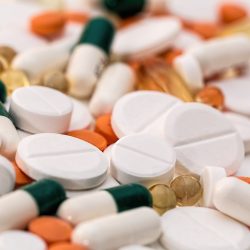Are you concerned about your health as you get older? Don’t want to age badly? Do you doubt your ability to keep control of your life? Perhaps you’ve witnessed the functional decline of your parents, or that of a friend. Whatever the reason, we’ve all said to ourselves: “I don’t want to end up like that”.
But what is it that can change the way you approach ageing so dramatically? A scientific breakthrough that overturns preconceived ideas about anti-ageing solutions. This breakthrough will enable you to keep the one thing that everyone your age wants to keep: your independence
- Independence, because your physical and mental capacities will last longer and be stronger than ever.
- Independence, because you are no longer afraid of ageing badly.
- Independence, because you maintain your vitality and protect your whole body.
But rest assured, there’s a simple technique you can use to try and maintain good health and an active lifestyle as the years go by.
But how do you reach an honourable age and still retain your true independence? The answer is simple: you have to actively combat the number one cause of premature ageing [1]: glycation.
After years of research, geneticists at the University of Utah identified and ranked the four causes of accelerated ageing [2]:
- Glycation (46%)
- Oxidative stress (44%)
- Chronological age (6%)
- Telomere shortening (4%)
As you can see, glycation comes first, and is largely responsible for oxidative stress, which comes second.
Why is glycation inevitable and how does it impact on your overall health? Have brown spots appeared on your skin in recent years? Have you noticed that your eyes are becoming less transparent and turning a greyish colour? When you pinch the back of your hand, the fold of skin that forms takes a long time to disappear [3]? Then you’re beginning to see the first outward signs of glycation!
The process is underway and goes much further than what you see on your skin. It affects your whole body [4]. Glycation is a chemical reaction similar to the caramelisation that occurs in cooking.
How does glycation affect your body?
This chemical reaction occurs between proteins and carbohydrates (sugars) in your body. These two essential nutrients are everywhere in your body and you consume them at every meal.
The reaction occurs in several stages [5]:
First, a carbohydrate molecule meets a protein molecule. It will bind to it, making it impossible to separate them. As it binds, the carbohydrate denatures the protein, which is then said to be a glycated protein. It is paralysed and deactivated by this binding: it loses its function in the body. The glycated protein then becomes an advanced glycation product called AGEs(Advanced Glycation End products). These are useless deposits resulting from glycation, and it is they that will have the most harmful effect on the body. Once a protein has been transformed into an AGE, it is nothing more than a waste product.
The body can neither use it nor get rid of it. As a result, they accumulate and become toxic to the body for 3 reasons:
1) AGEs are “dead proteins” [6]
All the proteins essential to the body’s functioning can be affected by glycation: collagen, elastin, keratin, haemoglobin, myelin. By binding to sugars, they die and gradually become AGEs. Just as caramel eventually hardens, these proteins become rigid and can no longer fulfil their functions.
This is precisely why glycation affects your entire health.
- If muscles are no longer properly nourished by proteins, they lose their strength and motor skills [7]. This is why older people become frailer and lose physical capacity.
- If collagen and elastin are attacked, veins and arteries become rigid and the cardiovascular system is affected [8]. On a daily basis, you’ll feel your palpitations racing and you’ll be out of breath at the slightest effort.
- If haemoglobin no longer fulfils its function, blood and the oxygen it carries circulate poorly throughout the body [9]. Your organs are less well supplied with blood and no longer function optimally.
- If the myelin membranes surrounding the nerve fibres in the brain lack protein, the neurons communicate poorly [10]. You will have more and more memory lapses and lose your intellectual alertness.
- If your joints lack collagen or elastin, they will rust and lock up [11]. You lose mobility, and this discomfort becomes more and more difficult to deal with on a daily basis.
- If your eyes lack collagen, the retina, the lens and therefore your visual acuity will be impaired [12]. You may find it difficult to read at a distance, and your ability to drive at night will be seriously impaired.
- If you lack keratin, your hair will become rough and brittle, and hair loss will accelerate [13]. Your head will become bald and your white hair will fall out in clumps in the shower.
- If your skin lacks collagen and elastin, it loses elasticity and wrinkles [14]. Your face becomes hollow and you look older.
I’m only giving you a few examples, but I could go on and on, as proteins play such a crucial role throughout the body.
2) AGEs saturate cells to the point of destruction [15]
Unfortunately, glycation doesn’t stop at protein destruction. Once transformed into AGEs, they pollute the very interior of our cells. AGEs attach themselves to cells, penetrating them and preventing them from functioning. As the glycation products accumulate inside the cells, they gradually suffocate and saturate them, leading to their premature death [16].
diagram of cells suffocated by AGEs.
And this is just the beginning of the chain reaction..
3) AGEs are a considerable source of oxidative stress [17]
By destroying cells from within, AGEs cause excessive production of free radicals. This reaction leads to oxidative stress, which spreads throughout the body and has the following consequences [18] :
- Many other cells are put at risk: the oxidative stress produced by AGEs becomes more potent and attacks everything around it.
- An imbalance between the free radicals that oxidise the cells and the antioxidants that protect the body from this harmful action. The body can no longer keep up and the free radicals take over.
- An even greater acceleration in the ageing process
Glycation and oxidative stress reaction
In fact, glycation is a chain reaction that affects the entire body. What’s more, your body is ill-equipped to protect itself against it naturally: it is unable to evacuate the products of glycation [19] (unlike oxidative stress, which it can combat thanks to the antioxidants it produces). Yet glycation is a natural and inevitable reaction, and it should be able to integrate into human biological functioning without causing too much damage.
But this is not the case, for one simple reason: we are overexposed to glycation products. There are two main sources of glycation that expose us to AGEs:
firstly, the one we have just seen, which occurs naturally in our bodies when sugars bind to proteins (endogenous source). Every time there is a glycaemic peak (and therefore every time we eat), glycation begins. But there is also a second, exogenous source of glycation (i.e. outside our body). Quite simply, our diet provides us with far too many EFAs on a daily basis [20].
What’s more, glycation also occurs in the kitchen every time you brown your vegetables or meat. The higher the temperature at which a food is cooked or the longer it is cooked, the more glycation it undergoes (the cooking method is very important) [21]. When a food is browned or scorched by cooking, or has that nice ‘grilled’ or caramelised taste, this is a sign that it is loaded with EFAs that are harmful to health.
This is why eating burnt food is toxic or why barbecuing is bad for your health. The beautiful golden colour and crispiness of grilled chicken is delicious, but particularly high in harmful EFAs. You shouldn’t consume more than 8,000 to 16,000 kU (kilo units) of EFAs a day if you don’t want glycation in your body to accelerate ageing [22].
To give you an idea, a single grilled chicken leg contains more than 16,000 kU of AGEs [23].
- 100g of butter contains 26,480 kU of EFAs.
- 10 cl of olive oil contains 11,900 kU of EFAs.
- 100g of feta cheese contains 8423 kU of EFAs.
In fact, most everyday food products are extremely high in EFAs even before they are cooked. So you can see why we’re all overexposed to glycation products and why this can quickly become a health problem that prevents you from ageing well.
But the good news is that you can limit the amount of EFAs in your diet.
Good habits to combat glycation
Here’s the advice I can give you to limit the harmful impact of glycation on your body [24-26]:
- Limit foods rich in EFAs: Certain foods should be avoided because they contain a lot of glycation products: ultra-processed foods, fried foods, grilled foods, foods cooked at high temperatures, foods rich in sugars and saturated fats.
- Use alternative cooking methods: Studies have shown that certain types of cooking minimise the production of AGEs: low-temperature cooking (below 150 degrees), boiling and steaming, and the use of marinades (the acidity of lemon reduces the glycation process).
- Eat foods rich in amino acids: Amino acids such as carnosine, lysine and proline help protect you against glycation because they attract sugars and force them to bind to them rather than to proteins. They are found in red and white meats (but be careful not to fry or grill them!), dairy products, eggs, oily fish, beans, lentils, etc
- Supplement your diet with natural antioxidants such as vitamin C or zinc: Zinc is a trace element that is essential for your body to function properly. It plays a role in over 300 enzymatic reactions, as well as in DNA and protein synthesis [27]. It therefore helps to produce new cells and new proteins to counteract the damage caused by glycation.
Despite this advice, glycation and its AGEs remain very difficult to avoid: we need to constantly redouble our nutritional efforts to maintain a diet low in AGEs.
Finally, you can combat glycation without having to control the glycaemic index or the cooking of each of your meals by following a course of natural antioxidant food supplements.
The triple action of zinc
Zinc plays a key role in our anti-glycation strategy by acting on the three axes we have identified to minimise the harmful effects of glycation on the body. This strategy aims to reduce sugar intake, promote the production of enzymes that break down existing advanced glycation end products (AGEs), and use natural compounds such as zinc to inhibit the formation of new AGEs. Zinc is an important part of this overall strategy and contributes to its effectiveness by acting on several fronts to prevent the damaging effects of glycation on the body. In a way, zinc is the synthesis of our anti-glycation strategy because it acts on the 3 axes we have identified together:
Firstly, it contributes to normal carbohydrate metabolism:
A compilation of 14 studies involving around 4,000 participants showed that high-dose zinc supplementation increased insulin activity, which regulates blood sugar levels [28]. Each study recorded significant regulation of blood glucose levels. As a result, blood sugar peaks are kept under control, sugars are well managed by your body, and glycation is therefore reduced [29].
Secondly, it helps combat the formation of AGEs:
This same large-scale scientific review also proved that zinc reduces the glycation of certain proteins thanks to its dual action on sugar metabolism and protein synthesis [30]. For example, glycated haemoglobin levels tend to fall rapidly in zinc-supplemented subjects.
If haemoglobin is preserved, oxygen circulates better in the blood and all your organs and tissues expel carbon dioxide more efficiently. This reaction has repercussions throughout the body, cleansing it thoroughly.
Thirdly, it is involved in a powerful antioxidant action:
Zinc is involved in protein synthesis. In fact, it helps to regenerate proteins destroyed by glycation, but it is also particularly useful in the fight against the oxidative stress produced by AGEs [31]. In fact, it induces the synthesis of HSP proteins. These are known as “chaperone proteins” because they have a protective role against all sources of cellular damage, in particular glycation AND oxidative stress [32].
In fact, between 2008 and 2022, three in-vitro studies carried out on humans took a close look at this mechanism [33-35]. They showed that zinc supplementation significantly increases the level of HSP proteins in subjects, and that these proteins play a part in the body’s antioxidant defences. Taking these studies into account, there is no doubt that zinc has a place of choice in your anti-glycation supplementation.
That’s why we advise you to follow a course of treatment with a supplement containing at least 15 mg of zinc (i.e. 150% of the Dietary Reference Intakes). For optimum benefit, we recommend the best form: zinc bisglycinate, which is 43% more bioavailable than other forms of zinc [36].
Sources:
[a] Hippocrates Institute of Florida, Staying young: impact of diet and lifestyle, translated into French by Alimentation Vivante.
[1-2] Institut Hippocrate de Floride, Rester jeune: impact de l’alimentation et du mode de vie
[3] https://www.antiageintegral.com/anti-age-revitalisation/glycation-vieillissement-anti-age
[4] Richard D. Semba, Emily J. Nicklett, and Luigi Ferrucci – Does Accumulation of Advanced Glycation End Products Contribute to the Aging Phenotype? – J Gerontol A Biol Sci Med Sci. 2010 September; 65A(9): 963-975
[5] https://www.pensersante.fr/les-dangers-de-la-reaction-de-maillard
[6] “Advanced Glycation End Products (AGEs) and Their Receptors (RAGE): Role in Pathogenesis of Chronic Diseases” by R. Cai, et al. published in 2020, in the “International Journal of Molecular Sciences”
[7] Olson LC, Redden JT, Schwartz Z, Cohen DJ, McClure MJ. Advanced Glycation End-Products in Skeletal Muscle Aging. Bioengineering (Basel). 2021 Nov 1;8(11)
[8] Peppa M, Raptis SA. Advanced glycation end products and cardiovascular disease. Curr Diabetes Rev. 2008 May;4(2)
[9] Elizabeth Selvin, Spyridon Marinopoulos, Gail Berkenblit, et al. Meta-Analysis: Glycosylated Hemoglobin and Cardiovascular Disease in Diabetes Mellitus. Ann Intern Med.2004;141:421-431
[10] Münch G, Westcott B, Menini T, Gugliucci A. Advanced glycation endproducts and their pathogenic roles in neurological disorders. Amino Acids. 2012 Apr
[11] Saudek DM, Kay J. Advanced glycation endproducts and osteoarthritis. Curr Rheumatol Rep. 2003 Feb;5
[12] Ishibashi T, Murata T, Hangai M, Nagai R, Horiuchi S, Lopez PF, Hinton DR, Ryan SJ. Advanced glycation end products in age-related macular degeneration. Arch Ophthalmol. 1998 Dec;
[13] Journal of Cosmetic Dermatology, 2017, “Glycation and hair health: a review” by A.C. Moyal, C. Maier, R.H.guy, J. Botchkarev, and V.A. Botchkareva
[14] “Advanced glycation end products and their receptors in skin aging and chronoaging” by R. C. Suh et al. (2019) in Journal of Dermatological Science.
[15-17] https://www.antiageintegral.com/anti-age-revitalisation/glycation-vieillissement-anti-age
[18-19] Yan SF, Ramasamy R, Schmidt AM. Mechanisms of disease: advanced glycation end-products and their receptor in inflammation and diabetes complications. Nat Clin Pract Endocrinol Metab. 2008 May;4(5):285-93
[20-21] Advanced Glycation End Products in Foods and de plus a Practical Guide to Their Reduction in the Diet” by Caius Rommens, Paediatric Endocrinology Reviews, vol. 14, no. 3, pp. 367-384, 2017
[22-23] Uribarri J, Woodruff S, Goodman S, Cai W, Chen X, Pyzik R, Yong A, Striker GE, Vlassara H. Advanced glycation end products in foods and a practical guide to their reduction in the diet. J Am Diet Assoc. 2010 Jun;110(6)
[24] “Advanced Glycation End Products (AGEs) and Their Inhibitors” by R. J. Collings et al, International Journal of Molecular Sciences, vol. 21, no. 10, 2020
[25] “Therapeutic Potential of Natural Compounds Against Advanced Glycation End Products” by P. Singh et al, Oxidative Medicine and Cellular Longevity, vol. 2019, 2019
[26] “Strategies to reduce advanced glycation end products” by C. Rommens, Pediatric Endocrinology Reviews, vol. 14, no. 3, pp.367-384, 2017
[27] “Biochemistry of zinc” edited by E.A. Dawes and L.J. Palmer (1998)
[28] Effective Jasmine Capdor et al, Zinc and glycemic control: A meta-analysis of randomised placebo controlled supplementation trials in humans. Journal of Trace Elements in Medicine and Biology. Volume 27, Issue 2, April 2013, Pages 137-142
[29] “Protective Effect of Zinc against Advanced Glycation End Products-Induced Toxicity in vitro and in vivo” – Journal of Diabetes Research, Volume 2016 (2016).
[30] However Jasmine Capdor et al, Zinc and glycemic control: A meta-analysis of randomised placebo controlled supplementation trials in humans. Journal of Trace Elements in Medicine and Biology. Volume 27, Issue 2, April 2013, Pages 137-142
[31-33] Enfin Putics A, Vödrös D, Malavolta M, Mocchegiani E, Csermely P, Soti C. Zinc supplementation boosts the stress response in the elderly: Hsp70 status is linked to zinc availability in peripheral lymphocytes. Exp Gerontol. 2008 May;43(5):452-61.
[34] De fait Pardo Z et al. Supplemental Zinc exerts a positive effect against the heat stress damage in intestinal epithelial cells: Assays in a Caco-2 model. J Functional Foods, 2021,83
[35] Effective Peng-Winkler Y, Büttgenbach A, Rink L, Wessels I. Zinc supplementation prior to heat shock enhances HSP70 synthesis through HSF1 phosphorylation at serine 326 in human peripheral mononuclear cells. Food Funct. 2022 Aug 30;13(17
[36] Gandia P, Bour D, Maurette JM, Donazzolo Y, Duchène P, Béjot M, Houin G. A bioavailability study comparing two oral formulations however containing zinc (Zn bis-glycinate vs. Zn gluconate) after a single administration to twelve healthy female volunteers. Int J Vitam Nutr Res. 2007 Jul;77(4):243-8.







